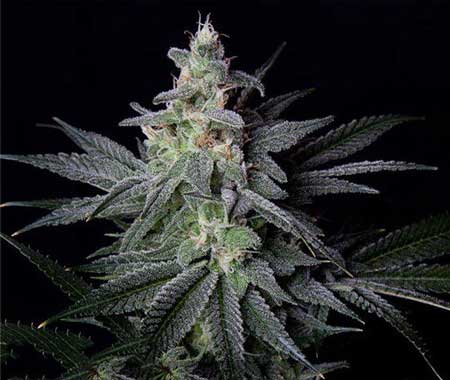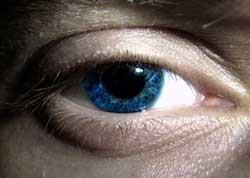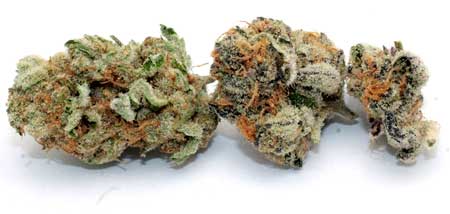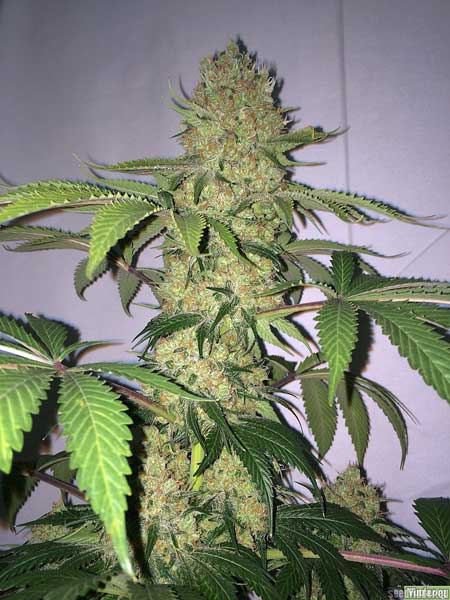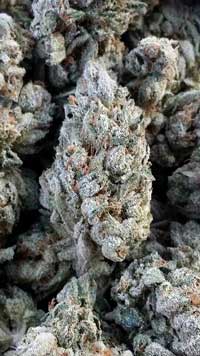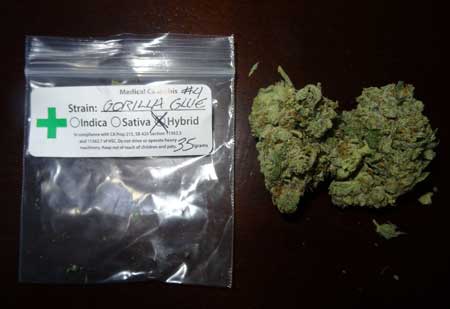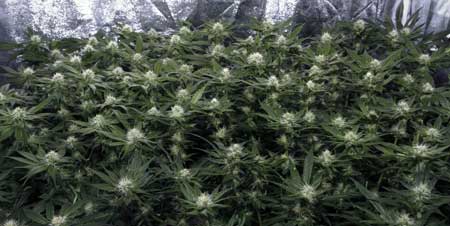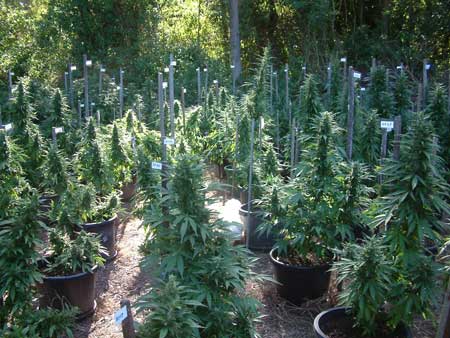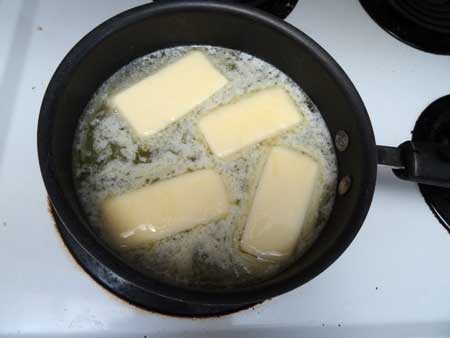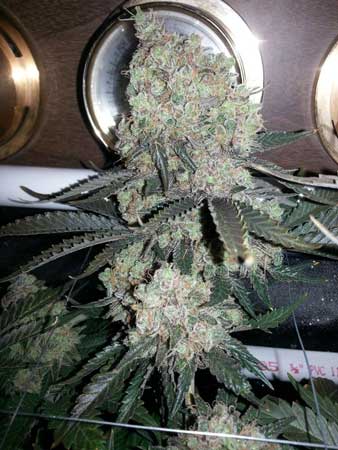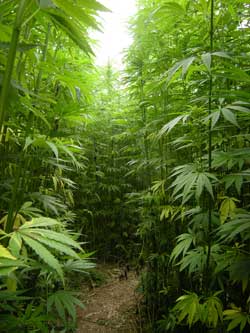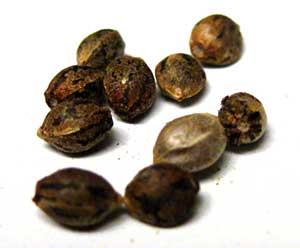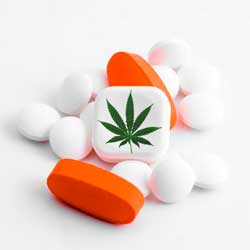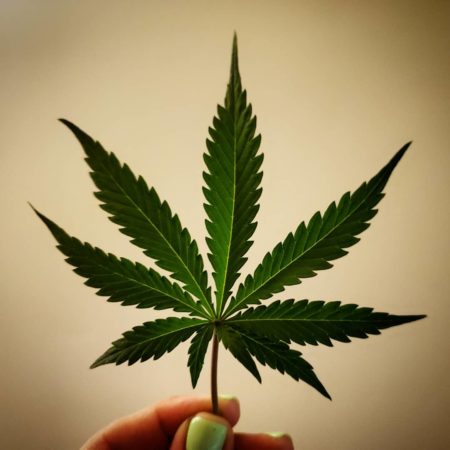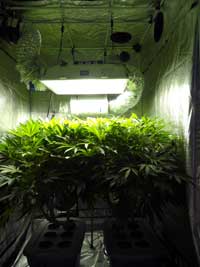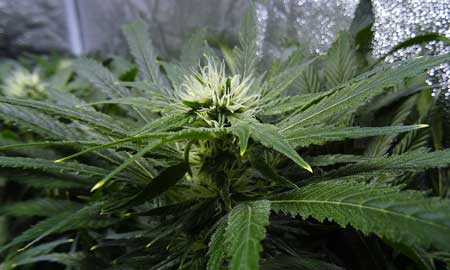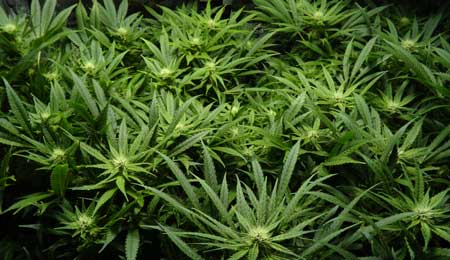by Nebula Haze
Table of Contents
What Makes a Strain “Medical” (or Not)?
What Diseases Can Medical Marijuana Cure?
Which Strains Work for Which Symptoms?
What’s the Difference Between “Hemp” and Weed?
What Makes a Strain “Medical”?
What’s the difference between “medical” and non-medical marijuana?
Short Answer: There is no objective difference between adult-use and medical marijuana.
Wait, what?
When it comes to cannabis, there are thousands of varieties with a wide spectrum of possible effects. While some of these effects are more “medical” than others, a strain that offers relief to one patient could make symptoms worse for another patient (and vice versa). Therefore, what you should focus on is finding a strain that offers relief for the specific symptoms you’re suffering from. It also usually takes some trial and error to figure out what works best for you and your body.
Is this “medical” marijuana? The answer may surprise you. It depends on your symptoms and how your body reacts!
There are so many cannabis strains that it’s impossible to neatly categorize them all. People often discuss the differences between “indica” and “sativa” strains when it comes to medical marijuana, but nearly every strain of cannabis is a hybrid.
To add another layer of complexity, we’re still learning how different compounds in cannabis affect humans. Recently, researchers in Italy discovered THCP, a powerful new cannabinoid that we didn’t know existed. There’s evidence that other cannabis derivatives such as terpenes and cannabis flavonoids may be responsible for some of the medical effects of cannabis, but we don’t fully understand how everything works together. Until there’s more objective research, a lot of medical marijuana patients must experiment to figure out which strains work best. Unfortunately, it’s not always easy to predict.
What should you do?
Instead of focusing on whether a strain is indica or sativa, or some other aspect like how it looks/smells, it’s often more useful to choose genetics based on the known effects and reviews from other patients.
Does medical marijuana get you “messed up?”
While many strains of cannabis have strong mental effects, some varieties are completely non-psychoactive. Non-psychoactive varieties of cannabis won’t affect your thinking much (if at all). Non-psychoactive varieties of cannabis are usually high in CBD with almost no THC. These low-THC strains are popular for the relief of anxiety, insomnia, and seizures.
Some cannabis strains affect your thinking, while others do not
However, many patients do use high-THC varieties of cannabis for the relief of certain symptoms such as pain and nausea. High-THC strains will get you “high” alongside any symptom relief.
What are the medical marijuana laws in your US state?
What Diseases Can Medical Marijuana Cure?
It is really really important to get out there that cannabis has not been proven to “cure” anything. Despite how much I love this plant and personally benefit from its properties, there is no credible scientific evidence that cannabis is some sort of cure-all.
That’s not to say that medical marijuana/cannabis is without relieving properties. In fact, cannabis is so reliable at giving relief to those in need that it’s been available for medical use in California for almost 20 years. As of 2020, there are several countries as well as over 30 states in the USA with some form of legislation to allow cannabis for those in need.
However, there are unfortunately many people willing to offer false hope to very sick people by saying that cannabis can cure their cancer, MS, PTSD, or epilepsy. When someone says that cannabis can “cure” something, their comments should be taken with a healthy dose of skepticism unless you’re given solid evidence that legitimizes their claim. Again, as of yet, there is no proof that marijuana “cures” anything in that it’s never been proven to completely eliminate a disease or condition.
The evidence that medical marijuana “cures” any condition is not conclusive
I’m not saying that medical marijuana doesn’t cure anything, just that we don’t currently have concrete evidence that it does. And when it comes to evaluating your possible medical options, I believe you must look at the evidence, and not go by word of mouth from people who are not medical practitioners.
Unfortunately, despite what you may have heard, there is no credible evidence that marijuana “cures” anything (though research is ongoing). What marijuana has actually been shown to do is offer relief from specific symptoms.
There is a lot of substantive evidence that some people are experiencing relief from cannabis for various symptoms, and that’s the focus of this article.
Which Strains Work for Which Symptoms?
I can give you some general guidelines (find them below) to help you get started, but there are no absolutes when it comes to the effects of different strains. Not only do strains have different effects if they’re grown under different conditions, the same buds also affect people differently.
A strain that aggravates anxiety for one person could reduce pain or nausea for a different patient. Buds that prevent one person from having seizures could actually trigger seizures for someone else.
This huge spectrum of effects is part of why we need to legally reschedule cannabis as a whole plant, so we can start to tease apart the specific components of cannabis that cause each specific effect. Like how we do with any other medicine.
Currently, patients in the medical marijuana scene must use iffy information combined with personal trial and error. There is no current database or other good way for medical marijuana providers and patients to share their experiences with each other. Because cannabis is illegal on a federal level in the US, there is very little reputable research that can be conducted on a large scale without the worry of legal trouble.
Example of medical marijuana from a California dispensary. You often don’t get much information about what you’re buying!
This is part of why it can be so much better to grow your own medical marijuana at home. You get to choose exactly what you want!
However, because of all the misinformation out there, when it comes to finding relief with medical marijuana it’s important to be realistic and manage expectations. If something sounds too good to be true, it probably is.
Now let’s share what we do know about medical marijuana, including what makes it effective for some patients and not-so-effective for others.
What We Know About Cannabinoids
There are different components found in cannabis which cause different effects. Although some substances such as terpenes (aromatics/smells) have been shown to alter the mental and physical effects of buds, it is the cannabinoids found in cannabis flowers that are the subject of the most research and interest. Cannabinoids work on natural receptors in our brain, causing the majority of effects attributed to cannabis.
Here’s a very short list of common cannabis cannabinoids (say that three times fast!) that have medical interest for researchers and patients. There are dozens more, but these are the ones we know the most about.
THC vs CBD vs CBN
- THC – responsible for many of the mental, anti-nausea, and possibly pain-relieving effects
- CBD – great promise for the relief of anxiety, seizures, insomnia, and many other conditions
- CBN – CBN levels rise as buds are allowed to go longer before harvest. It has a relaxing or body effect and is less psychoactive than THC.
- Other Cannabinoids – There are dozens, even hundreds of cannabinoids that can be found in various strains of cannabis or hemp. Most of these are not well studied or may not even be officially identified yet!
- Learn more about THC vs CBD vs CBN
Popular Conditions That May Get Relief From Medical Marijuana
- Pain, Spasms, Nausea & Lack of Appetite – Often treated with high-THC strains. Results vary widely from patient to patient so it’s best to gauge results on a strain-by-strain basis.
- Symptoms from Cancer Treatment – Many cancer patients have reported that cannabis gives them relief from the symptoms of chemotherapy. However, there is no concrete evidence that cannabis can cure cancer in humans. Please talk to your oncologist if you plan on using cannabis in conjunction with cancer treatment! Oncologists are some of the most sympathetic doctors when it comes to cannabis use.
- Seizures / Epilepsy / Dravet Syndrome – I’m most familiar with these conditions because I have epilepsy as well as a niece with Dravet Syndrome. It’s insane how much incorrect information I see thrown around about medical marijuana when it comes to seizures. The truth is, some epilepsy patients report a reduction of symptoms when using high-CBD strains. Most of these patients are using medical marijuana in addition to their other prescriptions, not as a replacement. However, higher levels of THC can actually trigger seizures for some patients, and most strains available today are high-THC and low-CBD. That means that most types of cannabis have the potential to make seizure symptoms worse! Therefore it’s incredibly important for people suffering from seizures to know what they’re getting, and also to work closely with a neurologist when making any changes to their medication. I personally use both high-CBD and high-THC strains, but I continue to take my prescription as well. Learn more about seizures and the effects of medical cannabis.
- Anxiety or Insomnia – Anxiety and sleeplessness are often addressed with high-CBD and medium-to-low-THC. For some people, high levels of THC can make anxiety worse, especially if trying cannabis in a new or unusual situation or when ingesting more than they’re used to. However, some patients get the most relief from high-THC strains. Note: Buds that are harvested too early or not dried and cured properly are more likely to cause anxiety, sleeplessness, and headaches for some people. Learn more about finding relief from anxiety with medical marijuana.
Mullaways Medical Cannabis’ medical crop, used for cannabinoid research in Australia
Vaping & Edibles for Medical Marijuana
When it comes to medical marijuana, smoking isn’t the best option as it can irritate lungs and there’s a lot of evidence smoking isn’t good for you!
However, vaping (vaporizing your weed instead of burning it) or eating edibles (cannabis in edible form) are considered the “gold standard” way to take advantage of medical marijuana.
Learn more about vaporizing cannabis
My Favorite Edible Resources
- Decarboxylation: How to Decarb Your Weed (crucial step for just about every edible recipe)
- Best Weed Butter Recipe
- Canna Caps for Easy Dosing
- How to Make Hash Oil / Rick Simpson Oil (RSO)
- How to Make Cannabis Tinctures
What’s the Difference Between “Hemp” and Weed?
Many people think of “hemp” as being a specific strain. Sort of like how there is “Sour Diesel” and “White Widow”. Others think hemp is closely related to cannabis but is a fundamentally different species of plant. Like peaches and plums.
Neither of those is true.
Hemp and cannabis are the same species of plant. So what exactly is hemp? Any strain of cannabis/marijuana that contains less than 0.3% THC (in the USA) is legally considered to be hemp. It’s not a strain, it’s a categorization. It’s like how there are many varieties of red roses. “Red” is a categorization, not the name of a specific variety of roses. Some countries have different upper legal limits for hemp such 0.2% and 0.5% THC, but the idea is the same.
Learn more about hemp laws in the USA on the FDA government website.
Is this hemp? It depends on whether a lab measures over or under 0.3% THC.
Let’s say I purchase “hemp” seeds and grow them out. Any plants that tests below 0.3% THC by dry weight is legally considered hemp. However, if one plant gets tested and is measured at 0.31% THC (on any part of the plant), that means it’s not legally hemp anymore. Even though it came from hemp seeds, and even though all the other plants from the same parents were legally hemp, this plant would be considered a narcotic because the THC percentage is over the legal limit.
Hemp is a category of cannabis, not a specific strain!
A major advantage of growing hemp over other types of cannabis is that it’s legal on the federal level in most parts of the world. While there is a lot of legal gray area surrounding high-THC cannabis, hemp farmers are rarely prosecuted in most places.
Because of the strict THC limitations, a huge part of the hemp industry is checking that plants stay under 0.3% THC (or whatever the local legal limit). Many hemp growers regularly test plants throughout the growing process so they can quickly toss any plants that test over the limit.
If you ever would like to grow hemp because it’s federally legal, it’s recommended you buy hemp seeds from a specialist to help ensure your plants don’t go over the THC limit. There are many strains of hemp that are rich in terpenes and cannabinoids, making them a great choice for people who want the greatest medical effects without any THC. If you do buy hemp seeds for personal use, make sure to get hemp seeds that were bred to have big fragrant high-CBD flowers, as opposed to strains of industrial hemp that are made to grow thick woody stalks and tend to grow small flowers that are not as medically useful.
It’s best to buy hemp seeds from a specialist
There are strains of cannabis that are extremely low in THC but don’t come with a THC guarantee. When a plant contains less than 1% THC, it may not legally be considered hemp but you likely won’t feel the effects of THC.
These strains are not legally hemp, but are extremely low in THC and won’t get you “high”:
- Doctor Seedsman CBD 30:1 Feminised Seeds (<1% THC, 20% CBD)
- Dinamed CBD Plus Feminised Seeds (<1% THC, 15-20% CBD)
- Pink Kush 30:1 Auto-Flowering Seeds (0.5% THC, 17% CBD) – Learn more about autoflowering strains
Is Growing High-CBD Cannabis Different from Growing High-THC Strains?
How Long After I Switch to Medical Marijuana Can I Stop Taking My Prescription?
There are likely some people who may be able to stop taking their prescriptions and manage their symptoms purely with medical marijuana. These patients are featured in stories and articles about medical marijuana so it might give the impression that they are the majority.
But the truth is, in all my years speaking with various medical marijuana patients, I haven’t spoken to a single patient who was able to completely replace all of their prescription medications with medical marijuana. Several have been able to lower their dependency or dosage, but the patients I’ve talked to almost always use marijuana in addition to the prescription medication that they’ve been prescribed by their doctor.
Most Patients Use Cannabis in Addition to Their Prescription Medications, Not as a Replacement
This doesn’t mean that cannabis won’t be effective at improving the quality of life for someone suffering from any one of a number of conditions. However, anyone trying cannabis for medicinal reasons should be aware that if you’re already taking medicine for a condition, cannabis will likely help you the most in conjunction with prescribed medication as opposed to replacing it.
Just as an example, you’ve probably seen some of the popular news stories about medical marijuana helping children with serious seizure conditions like Dravet Syndrome. While high-CBD cannabis is making massive improvements in their quality of life, many of these children are still taking prescription medications in addition to taking cannabis. The cannabis is simply used in addition to other medications to further reduce seizures and relieve symptoms that the medication wasn’t as effective at treating.
In some cases, patients are able to reduce the overall amount of medications they need to take, especially for medicines that are primarily used to reduce symptoms such as pain killers or opioids. As more research is done into cannabis, and new strains are developed, the options for relief will certainly increase. However, those thinking about trying cannabis for medicinal reasons should talk to their doctor, and go in with the expectation that cannabis will likely be an addition to your regimen, not a replacement.
Grow Tactics for Medical Marijuana
Strain is the most important aspect of growing cannabis plants when it comes to producing the effects you want! But there are a few tips and tricks.
How to Increase THC When Growing Weed
- Start with a high-THC strain <– Most important!
- Keep plants healthy
- Don’t harvest early
- Dry and cure your buds after harvest to maximize potency
- Maintain a good growing environment
- There’s more… Read the Full Growing Tutorial on How to Increase THC
How to Increase CBD When Growing Weed
- High-CBD Strain – Like THC, the most important aspect of producing high levels of CBD is to grow a high-CBD strain. Although clones are best because you know exactly what you’re getting, there are now high-CBD seeds available online for those who don’t have access to medical marijuana clones.
- Autoflowering Strains – Auto-flowering strains can be a good choice because they are more closely related to wild hemp and often have higher levels of CBD than other types of cannabis. Although there are auto-flowering cannabis strains bred specifically for CBD, nearly all auto-flowers have at least 1-2% CBD (compared to less than 1% in most high-THC strains). This mitigates the effects of THC and makes you less likely to have racing thoughts or anxiety.
- Don’t harvest early or late – Harvesting at right time maximizes cannabinoid and CBD levels
- There’s more… Read the Full Growing Tutorial on How to Increase CBD
Growing Medical Marijuana for a Friend or Family Member
A lot of people write to us because they want to try growing a high-CBD or other medical marijuana strain for a sick friend or relative. It’s a very human, and very admirable trait to want to help people if we can, especially the people we love! Every time I hear from a concerned family member trying to do all they can, I think of how fortunate someone is to have a person in their life who cares so much.
I also feel a pang of sadness at how much of a task there is ahead is for someone thinking to jump into indoor growing without knowing what it entails. After deciding to try medical marijuana, often someone’s initial plan is to start a whole grow operation, get a high-CBD strain, grow it, prepare it and then hope it actually does something. As commendable as this quest is, there are many possible points of failure. Anyone who tries to do this could be setting themselves up for a lot of possible heartache!
I believe it’s very important to try to confirm that cannabis will even do something for you or your friend or family member before you set off on a 4-month journey to grow it yourself. Try to get your hands on some high-CBD weed and test out the effects before investing in a grow set up.
Unless you just love growing plants for the sake of it. I understand that. Cannabis really is one of the most fun and exciting plants to grow 🙂
Recommended Strains Based on Feedback from Patients
Anxiety or Insomnia – High CBD, Varied THC
- Dinamed CBD Auto – A high-CBD (14%), low-THC(0.3-0.8%) autoflowering strain that was specifically developed to be relaxing. No psychoactive effects.
- Euphoria CBD – This strain has about a 1:1 ratio of THC:CBD. That means the buds will get you “high” but not in an overwhelming way. It’s a soothing choice for someone with anxiety who wants some of the medicinal effects of THC (psychoactive effects, pain or nausea relief, etc.) while still reducing nerves.
- Afghan Kush – This particular version of the popular strain is high-THC and feels very potent, but the mental effects tend to be calming and peaceful.
Seizures / Epilepsy / Dravet Syndrome – High CBD, Low THC
- Medikit CBD – CBD at 20% or more, and THC under 1%. Developed specifically to be a therapeutic strain (hence the name). A mix between the legendary (clone-only) seizure-fighting Harlequin strain and a selection of high-CBD strains that originated in Central and South America.
- Charlotte’s Angel CBD Auto – A high-THC (16%), low-CBD (0.7%) autoflowering version of the Charlotte’s Angel CBD strain (the autoflowering version seems better for seizures)
- Purplediol CBD Auto – Another great medicinal autoflowering strain. CBD is around 17% and THC is around 0.5%. High yielding and quick to harvest. Gives a “chill” feeling but no psychoactive effects.
Pain – Significant THC, Varied CBD
- Skunk Haze CBD – This prize-winning strain has a 1:1 ratio of THC:CBD. You will experience gentle mental effects that are not overpowering.
- LA Confidential – This version of LA Confidential has won numerous awards. The effects are potent, psychedelic, and pain-fighting, but won’t weigh you down like many high-THC strains. Somehow energizing and relaxing at the same time.
- Black Sugar – This very high-THC strain can help reduce pain and has powerful mental effects as well. Easy to grow!
- Florida Lemons – Another mighty high-THC strain. Beautiful bud structure and a delightful lemon scent.
Contact us if you have grown a strain that helps with your particular symptom. We’d like to expand this list over time!
Help get medical marijuana legalized in your US state!
Neither the creators of this site nor the author of this article are doctors or any type of medical professionals. Please don’t take anything said on this page or anywhere on GrowWeedEasy.com as medical advice. We are trying to share general information to help people, but please speak with a doctor about any specific questions, especially if you’re thinking about trying medical marijuana yourself!
Further resources for medical marijuana patients
Medical Marijuana Laws
What are the medical marijuana laws in your US state?
How to Help Change Laws in Your State
Medical Marijuana Laws by Country
Medical Conditions
Epilepsy or Seizures
Anxiety
Cannabinoids
Breakdown of Cannabinoids: THC vs CBD vs CBN
Learn more about CBD at ProjectCBD.org
Growing Tactics
How to Increase THC While Growing
How to Increase CBD While Growing
Edibles & Vaporizing
Learn More About Vaporizing
Edible Recipes: Best Weed Butter Recipe, Canna Caps, Rick Simpson Oil (RSO), Cannabis Tinctures
Jump to…
How Long Does It Take to Grow Weed?
7 Tips for Growing Top-Shelf Buds
5 Ways to Increase Yields (with any strain)
Is it safe to buy marijuana seeds online?

